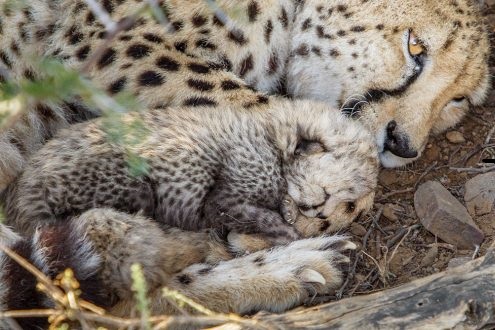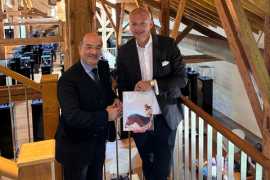Panthera highlights top ten wild cat conservation milestones of the decade (Video)
By Aliheydar_Rzayev Sunday, 29 December 2019 1:03 PM

As the decade comes to a close, global wild cat conservation organization Panthera identifies the “Top Ten Wild Cat Conservation Milestones” of the decade before looking to the future. The below successes, achieved with partners and generous donors from around the globe, range from scientific discoveries to technological advancements. Although a range of longstanding and emerging threats continue to challenge global wild cat populations, achievements like those described below warrant recognition—and celebration.
1. The Jaguar's Journey. The last ten years saw multiple milestones for the largest cat in the Americas. Drs. Alan Rabinowitz and Katherine Zeller’s groundbreaking 2010 publication presented a new range-wide model for jaguar conservation; in 2018, fourteen range countries agreed at the UN to work together to save the species, creating the ambitious Jaguar 2030 Initiative. When our co-founder Alan Rabinowitz passed away in 2018, he left behind an incredible legacy that continues to guide our work saving jaguars and all wild cats.
2. Hard-Won Tiger Successes. In key tiger sites where governments, local NGOs, and Panthera increased conservation and anti-poaching efforts, we saw remarkable gains. In India’s Manas National Park, tiger numbers have more than tripled since the decade’s start, from 13 in 2011 to 43 in 2019. Tigers in Nepal’s Parsa and Banke National Parks have quadrupled since 2013, helping to fuel a 19% increase in Nepal’s tiger population in five years. Meanwhile, a new breeding population of Indochinese tigers was discovered in Thailand, offering a ray of hope for the critically endangered subspecies.
3. Furs for Life. To combat leopard declines in Southern Africa, Panthera created an innovative program—Furs for Life—that provides a low-cost, high-quality synthetic alternative to the real leopard skins used in traditional ceremonies. Our research indicates that use of real furs has decreased by 50%, preventing hundreds of leopard deaths each year. The program expanded into Zambia in 2019 with the launch of Saving Spots, a joint initiative with the Lozi people to save leopards and other spotted cats.
4. Cute Cats on Camera. In 2017, wild sand cat kittens were recorded on video for the very first time, creating a digital “Awwwwww” moment that raised global awareness of the tiny and elusive desert-dwelling wild cat.
5. Life-Saving Tech. Panthera introduced the PoacherCam, a state-of-the-art camera trap with a special algorithm that differentiates between animals and humans. The cameras can transmit images to law enforcement in real-time, increasing their ability to pinpoint illegal activity, identify known poachers, and send trained patrols to stop them--before they kill.
6. Getting Serious about Small Cats. In 2018, we broadened our scope by introducing a small cats program. Of the planet's 40 wild cat species, 33 are considered small, and many are under threat yet poorly understood. Asia has the most to lose with the greatest number of small cat species. Panthera’s new program focuses on funding research in their most threatened landscapes, increasing our knowledge of the state of small cats and crafting solutions to save them.
7. A Spotlight on Lions. Cecil the lion’s death in 2015 sent shockwaves across the globe, led to new policies, including bans on trophy imports, and helped raise awareness about threats facing Africa’s iconic cat. The same year, Panthera and leading lion experts co-authored a seminal study showing that lions in most parts of Africa could decline by 50% over the next two decades. In 2019, Disney released a new live-action version of “The Lion King” with a conservation message and a campaign to recover the African lion.
8. Community Cats. Groundbreaking research by Panthera demonstrated that pumas, long considered solitary, are in fact more social than previously believed. A 2017 Panthera-led study provided the first evidence of complex social strategies in any solitary carnivore: every puma studied participated in a “network” of individuals sharing food with one other.
9. Lions in Gabon. In 2015, a lion was discovered in Gabon for the first time in twenty years thanks to rigorous research. The lone male may soon meet a mate: with support from the Lion Recovery Fund, we’re planning to reintroduce female lions to Gabon next year.
10. Alliances and Partnerships. Among Panthera’s many partnerships, the Global Alliance for Wild Cats, formed in 2014, stands out for the extraordinary financial commitment and long-term vision of its members — an international coalition of environmental philanthropists from the UAE, United States, India, China, and, most recently, Saudi Arabia.




























Add new comment